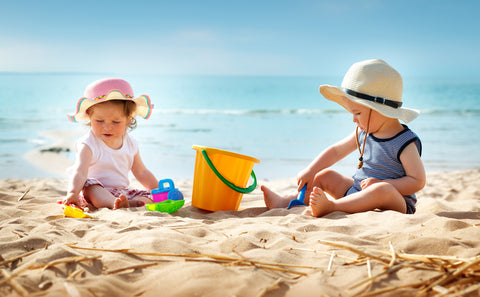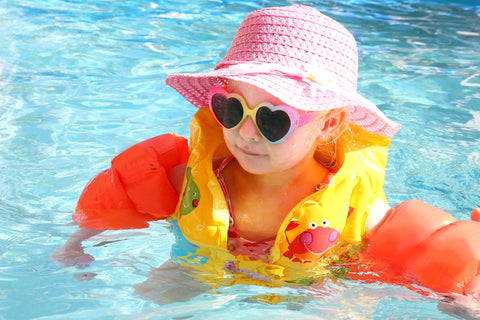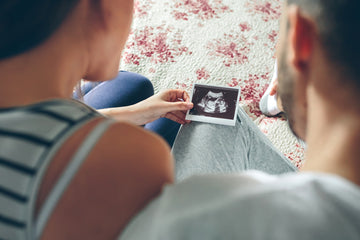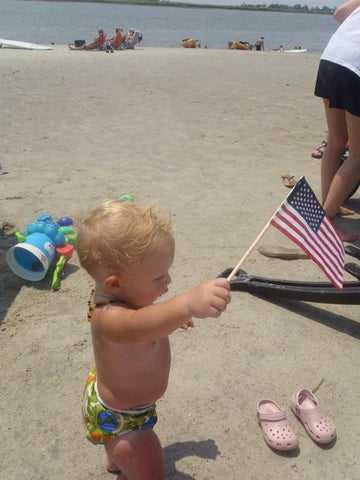How To Protect Your Baby from the Summer Sun and Heat
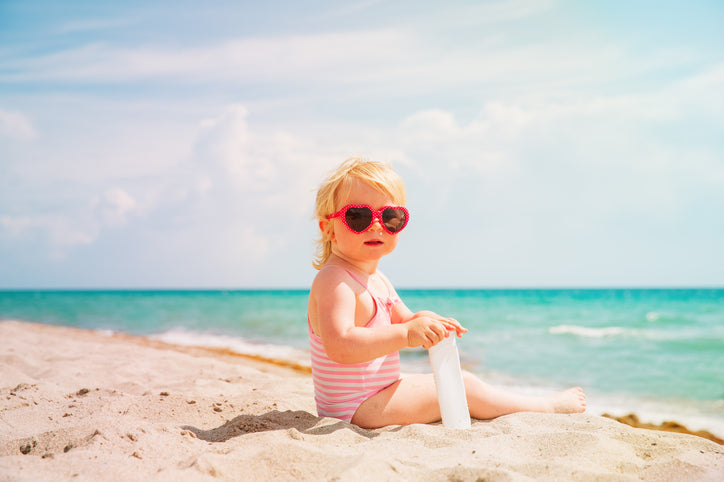
Summer is here, and the heat is on, but there's no reason you need to hide inside all season. Take precautions to protect your littlest humans (and yourself) so you can enjoy the summer.
The sun is at its strongest between 11:00 am and 3:00 pm each day. Although some days it feels like that window is much larger! Not only are babies at risk of sunburn, but our youngest ones are at increased risk of heatstroke.
Babies' tiny bodies have ‘virgin skin,’ and they can overheat quickly. It is of utmost importance that you keep your infant hydrated through breastmilk or formula on demand. Do not follow a feeding schedule because you may place your baby at risk for dehydration and overheating.
For children under 1-year-old – and especially during the first nine months of life – drinking too much water can be dangerous.
PROTECT YOUR BABY FROM THE SUMMER SUN
As parents, we want to protect our babies. We know that sun exposure contains both UVA and UVB rays that can cause sunburns, skin damage, and eye damage. We think, though, that slathering sunscreen on our young ones is enough…. But is it?
Did you know that infants under 6 months of age can now use sunscreen? That’s right, according to the American Academy of Pediatrics sunscreens may be used on infants younger than six months on small areas of skin if adequate clothing and shade are not available. Young babies (less than six months of age) absorb more of any chemical applied to the skin than adults, so the quality of sunscreen used is extremely important.
SUNSCREEN
Purchase a sunscreen that has been approved by the Environmental Working Group to ensure that you are applying safe ingredients to your child’s skin. (A mineral-based product containing titanium and zinc oxide is your best bet.)
- When trying a new sunscreen on babies, test it on a small patch of skin first to make sure it is suitable
- Apply at least 15 minutes before going outside and reapply every 2 hours or so depending on exposure and water play.
PLAY IN THE SHADE
Follow the shade throughout the day as it moves with the sun.
Ways to create shade:
- A great umbrella that can attach to a chair or baby seat
- A dense, full tree can provide a great shady spot
- A tent – a full-size camping tent, a tailgating tent, or a UV-baby tent are all great options
- A stroller with a large canopy
DRESS BABY APPROPRIATELY
Swimwear: Choose a swimsuit with UPF protection and wear a rash guard to cover more skin.
Clothing: Loose-fitting, cool cotton long-sleeved tops, and bottoms are recommended to allow airflow but block UV rays.
- Layering clothing can help create more UV protection.
- Darker colors generally offer more protection than lighter colors.
Hat: Select a hat that fits your baby well but has a wide enough brim to protect the ears and back of the neck. (When choosing a hat for a young child, consider the size and comfort, the amount of shade it provides, and if it will obstruct vision or hearing.) Consider a hat that has UPF protection and can be adjusted at the crown and secured with a safety snap so it is not a choking hazard.
- Most babies hate hats until they are used to them. Persistence is key; make a hat part of every day outside routine.
Sunglasses: You want sunglasses that wrap around the head, providing the most eye protection.
KNOW YOUR UV LEVELS
The daily sun protection times are issued whenever UV levels reach 3 or above. Because you can’t see or feel UV, you can’t rely on your senses to let you know when you’re in danger. Get in the habit of checking the sun protection times each day!
Enter your zip code to learn your UV index today: EPASUNSAFETY

NOTES: The AAP still recommends avoiding excessive sun exposure – by staying out of the mid-day sun and dressing infants in lightweight long pants and long-sleeved shirts – as the best protection against sunburn. In addition to possible sunburn, infants and children may be at increased risk for eye injury from the sun. The AAP says children, including infants, should wear hats with a brim and sunglasses designed to block at least 99% of the sun’s rays. Don’t avoid the outdoor fun this summer, just be smart and keep your little one safe in the sun!
